About the Blog: Here is a complete travel guide on Moynaq and Aral Sea ship Graveyard in Uzbekistan. The blog delves a bit into what happened at the Aral Sea, what is there to see at Moynaq and how you can experience the Aral Sea disaster through a trip. I have tried to include all the relevant information here and whether it is worth visiting the Aral Sea Disaster in Uzbekistan.
When I first read about the Aral Sea while researching for our Uzbekistan trip, I was a bit curious. As much as my knowledge in geography permitted, I knew Uzbekistan to be a land-locked country. So, I did what I do best. I read more, and found out that the Aral Sea was once one of the largest saline water lakes in the world. And it is also regarded as one of the biggest man made environmental catastrophes of the 20th century!
Having read about the Aral Sea had piqued my interest about this place and we decided that this is one place in Uzbekistan that we must visit. But I was in for a mild surprise. Because the cost of an Aral Sea trip is quite high and it will perhaps take almost half of our Uzbekistan total trip budget.

So I asked. I wanted the opinion of travelers who had been to Uzbekistan. I asked around in various groups and I got polarizing opinions. Some said that it was not worth the travel time and the cost, while others mentioned it to be an experience to remember. I noticed that the positive reactions were from all those who had been there. Our travel time would allow us either a trip to Aral Sea or the Fergana Valley and both seemed very interesting. And that was a travel dilemma I do not want to face again (but we keep facing them anyways).
After much deliberation and discussions, we decided to visit Aral Sea. However, we were not prepared for the starkness that hit us in the wildest frontiers of Uzbekistan. I wasn’t prepared to witness firsthand what the foolhardiness of men can do to nature.
Planning a trip to Uzbekistan? Read our Comprehensive Uzbekistan Travel Guide to plan your trip.
To be honest, we travel to learn about new places and people. Experiencing interesting cultures, exotic landscapes, mountains and sandy beaches, tasting new cuisines and meeting friendly people are some of the things that make us hit the road again and again.
As much as we have fun and enjoy life while on road, traveling has also made us wiser, patient, tolerant and observant. As much as we enjoy the beautiful things in the world, we also sometimes visit a few sad places that have dark histories like Kalapani in Andaman, war cemeteries and others. The Aral Sea was one such sad place.

Aral Sea Disaster – What Happened to the Aral Sea?
Aral Sea is an endorheic lake, which means that it is a geologic depression or a big basin of water that does not have an outlet to any sea or ocean. It is believed to have been formed almost 5.5 million years ago and is spread between Uzbekistan and Kazakhstan. Before the 1960s the Aral Sea was fed by the Amu Darya River in the south and Syr Darya River in the north, rainfall and snowmelt in the spring. Once upon a time, it stretched across almost 69,000 sq kilometers and also supported an ecosystem of 20 different species of fishes. The rich biodiversity of the region provided livelihood of almost 40,000 fishermen.
In the middle of the nineteenth century, the Aral Sea was a strategic asset of the Russian Empire.
Moynaq town, located about 210 km from Nukus was one of the main seaports on the Aral Sea. It was a thriving fishing center.
But this is all in the past.
Since the 1950s, when Uzbekistan and Kazakhstan were still a part of the Soviet Union, the Russian government went ahead with their plan to enhance their cotton cultivation project. The government decided to divert the Amu Darya and Syr Darya Rivers to irrigate the land and cotton plantation. Their aim was to be Europe’s leading producer of cotton. However, the plan was not well-thought out. The project was rushed and the irrigation channels that were constructed were inefficient with water loss along the pipelines ranging from 30-70%.
However, the result was achieved. Uzbekistan became one of the world’s largest exporters of cotton by the end of 1980s.
But the ultimate price for all these “development” was paid by Aral Sea and the surrounding area.
The Aral Sea gradually began to shrink as its source of natural nourishment was stripped, eventually splitting it into two basins. By the 1980s, the surface area of the Aral Sea was just a quarter of what it used to be.
The shrinking of the sea was deadly to the biodiversity of the place. The water became extremely saline that led to the extinction of almost all the marine species – both animals and plants. As more and more salt deposited on the banks, the animals ate salt-laced grass and became ill.
As the water dried up, the economy of the region crumpled.
From 1982, the fishing activity in the lake was stopped. To keep the production chain alive, the Soviet Government initially transported to Moynaq the fishes caught in the Baltic Sea. But the cost of transportation was high and this project also was unviable and soon abandoned.
Sadly, even with the dissolution of the Soviet Union, the irrigation project did not stop. Uzbekistan especially continued with the irrigation process.
In 1997, the entire sea had depleted by 90% and split into two halves – the Small Aral in the North (Kazakhstan) and the Large Aral in the South (half of it is in Uzbekistan).
The place that was once the sea was now an arid desert of salt and sand teeming with pesticides and salt. The winds blowing in the region regularly raises toxic dust storms filled with salt, fertilizers and pesticides. And this causes severe respiratory and kidney disorders in the local population. Currently, in the Aral region in Uzbekistan, the infant mortality rate is quite high and mothers are warned not to breastfeed their babies.
Moynaq in Uzbekistan and Aralsk in Kazakhstan used to be such wealthy cities and important centers of fishing industries. Today they are ghost towns reeking of helplessness and misery. There is a huge rate of unemployment and bitterness in these towns.

The Aral Sea disaster is said to be one of the most dreadful man-made environmental tragedies in the world. When you see that in front of your eyes, it is quite an eerie feeling. There is just endless deserted landmass in front of us with little or no vegetation. The horizon seems endless. And this is where you realize how nature will not forgive the foolhardiness of humans.
We have visited the Aral Sea on the Uzbekistan side and would like to share our experiences with you through this blog.

Aral Sea in Uzbekistan and the Republic of Karakalpakstan
The Aral Sea in Uzbekistan is located in the Autonomous Republic of Karakalpakstan.
Karakalpakstan used to be a fertile region. But after the destruction of the Aral Sea, most of the surrounding land became arid and the population started suffering from several diseases. The Uzbek government, too, did not invest money in the development of the region leaving it to its own fate. Today, it is one of the poorest and most desolate regions of the country. There is a huge increase in poverty and unemployment.
The majority of the population of Karakalpakstan ethnically belongs to Kazakhstan. The Karakalpaks also have language similar to that of the Kazakhs.
Aral Sea Trip

On our two-week long trip t o Uzbekistan, we had decided to visit the Aral Sea first. So after spending a day at Tashkent, we boarded the night train from Tashkent to Nukus, which is the capital of the autonomous Republic of Karakalpakstan. You can also call this the gateway to the Aral Sea in Uzbekistan.
Train journeys in Uzbekistan are quite comfortable. However, the night trains do not have air conditioning. In October, the weather was cool and we did not have any problems, but I am not quite sure how hot it will be in the summer months.

We arrived at Nukus early in the morning. Nukus is a small town with modern buildings and clean pavements lined with trees. We had booked our trip and already had a car waiting for us at Nukus Railway station.
We had shared the trip with another traveler who was already in Nukus when we arrived. Our car picked him up from his guest house and after having a quick breakfast at Nukus, we started towards our Aral Sea adventure.
Aral Sea Tour is usually done through a travel agent. You need a 4X4 car to drive through the trail leading to the Aral Sea. Usually there are 2D/1N and 3D/2N tours to the Aral Sea. In these tours, they will take you to the shore of the Aral Sea along with Moynaq town and a few other places. As I mentioned earlier, the cost of these tours are a bit on the steeper side.
If you have lesser days and even lesser budget, you can also make a day trip to Moynaq, visit the Moynaq Ship Cemetery and return back.
We had done a 2D/1N trip to the Aral Sea which took us to the shore of the Aral Sea. We also stayed overnight at a yurt camp near the shore.
Places to Visit During Aral Sea Tour
1. Moynaq

Moynaq, also known as Moʻynoq and Muynak is located in the north-western part of Uzbekistan. The distance from Nukus is about 200 km and we reached there in about 3 hours. The ride till Moynaq was satisfactory, but a bit boring.
You will notice that you have arrived at Moynaq when you see a huge structure with Moynaq written on it. This was actually our first stop for the day. This is the place for clicking pictures.
So we did what we had to do, that is take a few pictures of the place. And then we headed towards Moynaq town.
The Town
I think the effect of the Aral Sea disaster has been felt most dramatically in Moynaq. Once upon a time, Moynaq used to be a thriving sea port, a town teeming with life. But today, Moynaq is a ghost town. As we drove in, we came across an empty town. Not a person was seen at the main square. The markets were in a sorry state, which is something we rarely encountered in Uzbekistan.

The streets were empty and most of the houses were in ruins.
Moynaq, once a famous harbor, is now without a sea. The actual seashore has receded almost 150 km away. It is sad, it is insane!
We crossed the main town area and drove ahead until we came to the Moynaq Ship Cemetery, which is perhaps the main attraction of this semi-ghost town.
2. Moynaq Ship Graveyard

As we were driving, we could see miles and miles of sandy land with dry bushes. The horizon seemed so far. And then in the midst of them, we first saw something broken standing in the middle of nowhere. On looking carefully, we could make out that those were the ruined remains of ships.
It is the harbor that represents the stark situation. The road ended on top of a cliff with a flight of stairs leading down to the old shoreline. Just beyond what used to be the waterline stood rusting hulks of old fishing vessels.


There were ten to twelve remains of ships harbored on what used to be the sea. As the sea receded, the ships were left behind at the harbor.
We wandered in the graveyard of the abandoned ships looking at them in awe. We entered into their bellies and even climbed on top of a couple of them. And all the time we kept wondering that the surface I am walking over right now was once actually a sea bed!



It was a humbling feeling to walk around this place and to feel the darkness of the place. For Moynaq Ship Cemetery makes you ponder.
We were left to wander about the place and then visit the Aral Sea Museum, which is located quite near the Ship Graveyard.
3. The Regional History and Aral Sea Museum
To get to the Regional History and Aral Sea Museum, we had to climb uphill for a bit from the ship graveyard. The museum is a small and modest building having a few Soviet artifacts, paintings and photographs. These photographs mainly show the Moynaq and Aral Sea of the past. Inside the museum, we were shown a documentary film about the Aral Sea disaster.
Personally speaking, the museum is okay to miss. However, if you are traveling in a group tour, you will probably be taken to the museum.
Entry Fee : 20,000 UZS
4. Aral Sea Memorial

Next came the Aral Sea Memorial, which is located just in front of the Aral Sea Museum. The Memorial looks over the ship graveyard and you can see acres and acres of sandy land until it meets the horizon at the far end.
There is a small historical summary to read that states the condition of the Aral Sea from the past to the present.

Interestingly, there was a direction marker with spikes pointing to various cities of the world like Cairo, Berlin, New Delhi, London, Mecca and Brasilia. It is a graphic reminder of what was once the sea.
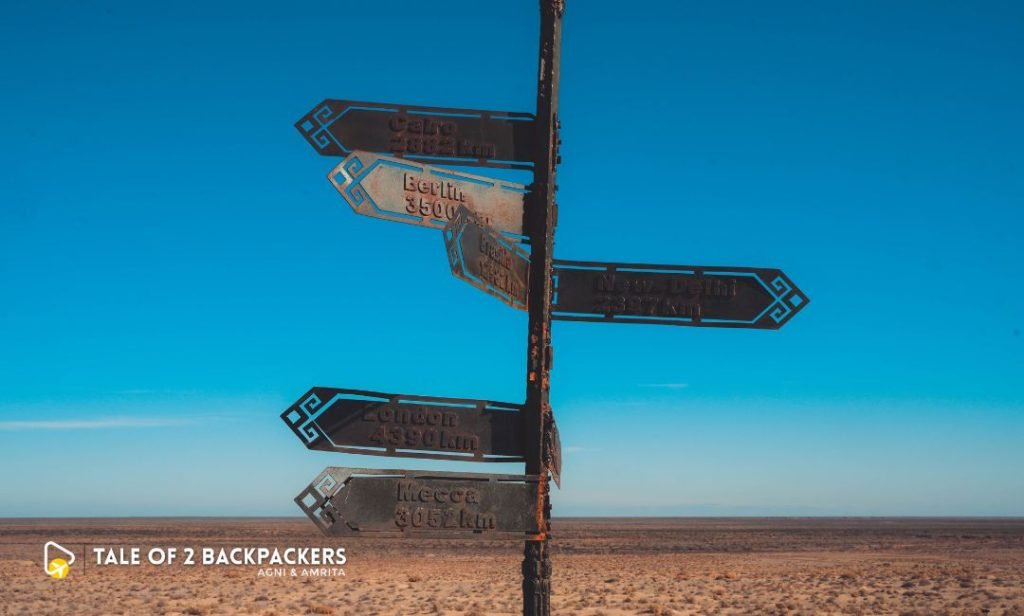
Lunch at Moynaq
After our visit to the Moynaq Ship Cemetery and Aral Sea Memorial, we went to the town for lunch at a local house. We had Uzbek cuisine for lunch consisting of meat, manti and bread and fruits. After a filling lunch we again started our journey towards the South Aral Sea shore, our final destination for the day.

Journey towards South Aral Sea
We started our long journey again. Leaving the precincts of Moynaq town, we entered into a land of nothingness. On both sides of the road, we could only see sandy lands with some dead looking bushes. There were no houses, no settlement to be seen. Human beings were a far possibility.

Soon, we were off-roading through a vastness that was once the Aral Sea. As long and as far as our eyes could see, there was only an infinite stretch of land until it met the horizon. You will not be able to fathom it unless you visit there. This is where I realized the word “still-vast sea.” Just imagine, we were driving on a dead seabed!

There was not much to say about the journey. The roads were bumpy and there was not much in terms of scenery. At one time, you might be even bored seeing the same thing out of your window. After driving for about 2 hours (we also took a small nap in between), we reached Ustyurt Plateau. It was sunny and warm in October. I wonder how hot and scorching it will be during the summer seasons.
5. Ustyurt Plateau

What can I say about this place? Once we reached there, we could only stare at the vast landscape in awe.
The great Ustyurt Plateau is a clay and story desert area of almost 200,000 sq kilometers located in between Uzbekistan and Kazakhstan. The plateau occupies a large area between the Aral Sea and the Caspian Sea.
According to the scientists, Ustyurt is the bottom of a dried-up sea which existed here in the early and middle Cenozoic Era, almost 21 million years ago. The topography of the region provides a great insight into the history of the earth itself and is quite an interesting topic if you want to delve deeper.


But for us, at that time, it was simply a place to look at in awe and appreciate the amazing vistas in front of us. The area is quite photogenic with a desolate landscape. The flat desert terrains were interrupted by rock escarpments and chalk rocks. It was quite a place to be.
So we stopped there for some time, took some pictures and then carried o n with our journey.
6. A nondescript caravanserai

While on our journey towards the Aral Sea shore, the driver and guide stopped at a place where we could see a few rocks lying around. Some of them looked like obelisks. The guide told us that this place was once a caravanserai – a place where the camels and caravans used to rest while on their journey from Kazakhstan to Tajikistan through Uzbekistan. It was basically a resting stop on the Silk Road.
We took some pictures there. The sun was already nearing the horizon and our driver urged us to move because he wanted to reach our destination before sunset.
And I finally understood why he wanted to be there before it got dark. The road was extremely treacherous. There was quite a downhill rocky trail.
After a thrilling ride, we finally got a glimpse of the South Aral Sea.
7. South Aral Sea Shore
After the Aral Sea shrunk and split into two bodies, the bigger part left in Uzbekistan is known as the South Aral Sea. In 2003, the South Aral Sea again had split into two. By 2014, the eastern part of the lake withered away and now only the western part remains.
It was almost sunset time when we reached the Aral Sea shore. The place looks just like another sea shore. But its history is dark. The soil near the water is quite muddy and our feet got stuck in a few places.
Expectedly, swimming should not be done here. Though there are some brave hearts who would like to play in the waters, I think it should be a no-go. You can obviously spend some time inside the water if you want to.
The Aral Sea shore is also a place for flamingos. We saw quite a number of them. But while trying to take pictures, they simply flew away.
We spent some time at the lake and then went back to our yurt camp.
8. Staying the Night at a Yurt Camp

There were 2 yurt camps near the Aral Sea shore. One was quite near the sea, but that was closed. Ours was a kilometer away from the sea shore located on an elevated land.
We reached the yurt camp and got a tent to stay for the night. The camp had mattresses on the floor to sleep and there were quilts for the cold. There were common toilets as well as shower areas.

There were other groups as well there. In the evening we sat in the dining room meeting new people and exchanging travel stories and experiences with one another. Dinner was a grand affair with some great Uzbek cuisine.
The night sky was quite clear with millions of stars dotting the blue-black sky. I think I have never seen such a clear sky full of so many stars. The night sky at Kongthong comes to a close second.
We had a good night’s rest and woke up early in the morning to view the mesmerizing sunrise.
Sunrise at Aral Sea

Well, I will not write much about it. It was quite cold and our hands and legs were almost frozen. But the sunrise was spectacular. I will let the pictures do the talking.
After watching the sunrise, we had our breakfast and once again started our journey, this time towards Nukus. However, on the way, we stopped at a few places.



9. Kurganch Kala
Kurganch Kala is a caravanserai located not very far from the yurt camp. This is basically the remains of a 12th century caravanserai. All you find here are the ruins of crumbling mud walls and piles of bricks. But once upon a time, this place used to provide night shelter to the traders of the Silk Road.

10. Lake Sudochie
Lake Sudochie was once the largest water reservoir in the Amu Darya delta of Karakalpakstan. It was fed by the river and was connected to the Aral Sea by a channel. It was a popular hub for the fishermen and had a thriving ecosystem. However, the Soviet irrigation policies affected Lake Sudochie as well. As the Amu Darya River was diverted and the Aral Sea dried up, Sudochie Lake too gradually split into several smaller bodies of water.




Today Sudochie Lake is known for its small island overgrown with reedbeds. Several endangered species of birds and flamingos flock the area. Flamingos are usually seen in the spring season.
Sudochie Lake looked somewhat like Loktak Lake of Manipur, but without any human beings there. Just near the Sudochie Lake is the Urga fishing village.
Urga village was inhabited till 1971 when the few fishermen living in the area were forced to abandon the place because of lack of fish as an aftermath of the Aral Sea disaster.
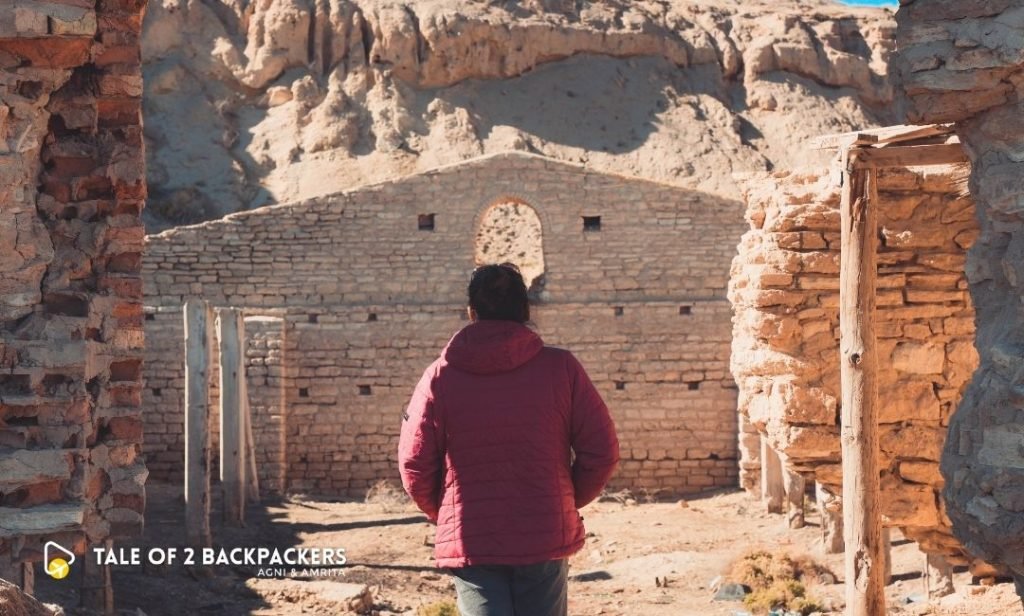

We saw a ruin of a building which our guide mentioned was once a fish processing plant. We also came across a few other ruins of houses or what remained of Urga village.
As the fishing industry died in the Karakalpakstan area, some people found riches beneath the soil. On the way, we could see a few natural gas units.
Leaving Urga, we drove across the vast and endless land that was once the Aral Sea until we reached an oasis in the middle of the desert. It was Kubla Ustyurt village.
11. Kubla Ustyurt

The village is located in the middle of nowhere and feels like an oasis. There were a few houses in the village and a small playground. But surprisingly, we did not see a single person in the village. Most of them had gone to work in the nearby gas factory.
The village is usually a stop to get the vehicles refueled. After roaming around the village for some time, we again started our journey back to Nukus.
We had a modest lunch at Kungrad town. Before reaching Nukus there were two more places to be explored.
12. Necropolis of Mizdakhan

The Necropolis of Mizdakhan is located about 20 km from Nukus on top of a hill. This ancient monument dates back to the 4th century BC.
The necropolis is actually a number of mausoleum ruins and burial grounds of the erstwhile kings and important persons of the Khorezm region. There is a citadel wall as well. This place is considered to be one of the holiest in Uzbekistan by the Muslims.




We went inside and just looked around and saw multitudes of burial sites there. The guide also told us some interesting stories surrounding the place.
From the Mizdakhan, we could see the Fortress of Gaur Kala, which was our next stop.
13. Gaur Kala Fortress

The fortress of Gaur Kala is located about 25 km from Nukus city over a hillock. It was built in the 4th century BC and was once a settlement of the fire worshiping Zoroastrians. The name literally translates into “fortress of the infidels”. This name was given by the Arabs as the inhabitants of the fortress were Zoroastrians.
The fortress is now in ruins like most of the other fortresses of the Khorezm region. We roamed around the ruins and watched a wonderful sunset from there. We returned back to our car after the sunset and found that our driver was a bit displeased with us because we spent so much time at gaur Kala. Well, the frown from him was worth the sunset that we viewed!


It was a long day and finally we reached our guest house at Nukus by the evening.
We had taken a 2 day Aral Sea trip. There are a few other places of interest in the area and you can take a 3 day trip to visit them. I will mention them here.
14. Barsa-Kelmes Salt Flats
This is located southwest to the Sudochie Lakes. These salt flats are the crystallized remnant of the ancient Tethys Sea. Barsa Kelmes Salt Flat is quite large at 70 kilometers long and 40 kilometers wide. And it consists of stretches of lifeless white land with cracks and shallow lands. Their pictures somewhat reminded me of the salt flats of Rann of Kutch.
This is a place of beauty as well as loneliness. And of course, it is a great place for some amazing photography. The white flats looked quite striking against the blue skies of Uzbekistan.
15. Stihia Festival
Stihia is an electronic music and environment awareness festival held at Moynaq every year since 2018. This festival aims to bring together music lovers, musicians, artists, engineers and environmentalists for collaborations. It aims to raise awareness about this environmental catastrophe while raising funds for the Aral Sea disaster victims.
The rusting and defunct ships on the sandy stretches form the best location for the electro music festival. You can find more about this festival here.
Practical Information about the Aral Sea
How to Get to the Aral Sea in Uzbekistan?
To get to the Aral Sea and explore all the places I mentioned, you have to book a tour or use private transportation. The area is quite remote and there is no private transportation available, but only up to Moynaq. You would need a 4X4 vehicle to get there safely.

If you plan to visit in your own vehicle, make sure you can drive well and have a couple of spare tyres, especially if you plan to venture beyond Moynaq.
If you are renting a car in Uzbekistan, do it at Tashkent itself. We did not find any renting agencies at Nukus.
Aral Sea Tours
The best and easiest option is to book a tour. You will find several Aral Sea tours from Khiva and Nukus. The tours are a bit expensive, but the price is worth the experience.

Most of the Aral Sea tours are for 2 days and 1 night that covers Moynaq, the ship graveyard, Kurganch Kala, the Great Ustyurt Plateau and canyons, South Aral Sea, Sudochie Lake, village of Kubla Ustyurt, Necropolis of Mizdkhan and Fortress of Gaur Kala.
For 3 days and 2 night trips, usually Barsa Kelmes Salt Flats and a few other places are included.
The local drivers usually do not speak English. So if you want to get a history of the place, it is advisable to hire the services of a guide. A guide usually charges an additional $100 per 2 days trip.
These tours usually take place from April to October.
Visiting Moynaq as a day trip Nukus
If you have less time and a low budget, then you can likely take a day trip to Moynaq from Nukus or travel only up to Moynaq.
Anyways, Nukus is the best place to explore the region of Karakalpakstan.
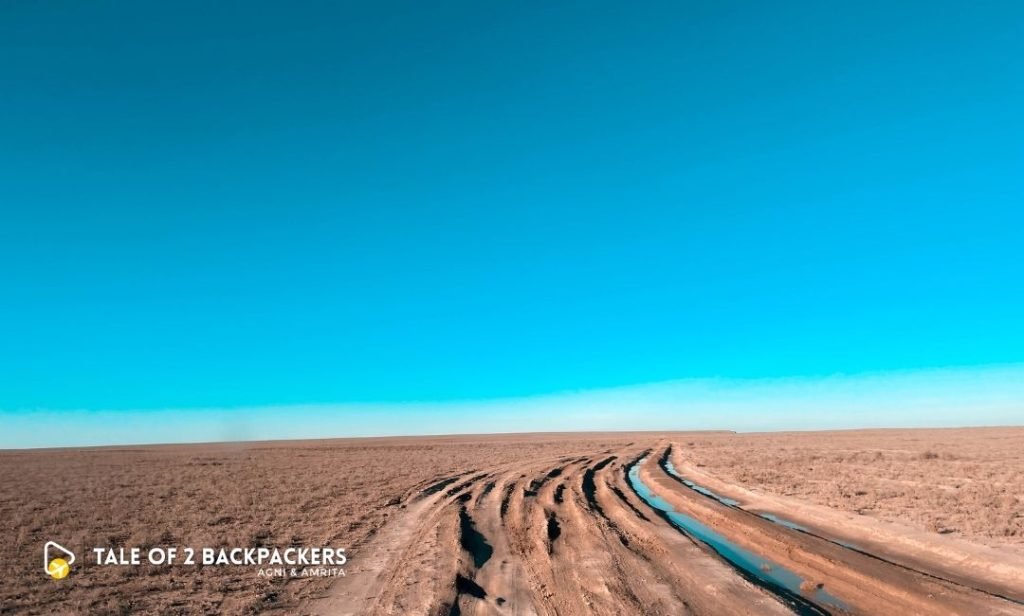
How to Get to Moynaq from Nukus by Public Transport?
By Marshrutkas
There are daily Marshrutkas or minivans running from Nukus Bus Station to Moynaq. The first one leaves at 9.00 am in the morning. Reach the bus station a little early to get your seats. Each seat will cost around 20,000 Som.
The last Marshrutka departs from Moynaq at around 3.00 pm to Nukus. But to get a feel of the place, you should stay for a night at Moynaq.
By Taxis
You will get taxis from Nukus to Moynaq and it can cost from 700,000 to 800,000 Som. So if you are in a group, it would be worth taking a taxi and splitting the fare.
You can also take a taxi from Nukus to Kungrad and then another one from Kungrad to Moynaq.
Where to Stay during your Aral Sea Trip?

Places to Stay in Nukus
Besqala Guest House
Jipek Joli Inn
These are the most well known. Both these stays also offer Aral Sea tours. There are other hotels that you can check out.
Places to stay in Moynaq
Moynaq has a few small guest houses, but most of them remain closed from late autumn to late spring. Also, these hotels usually do not accept online and pre bookings. You have to go there and find a place to stay.

What is the best time to visit the Aral Sea?
The Aral Sea has a desert climate. In summer, the temperature can get very high and the scorching sun on top does not help much.
In the winters too, temperatures get as low as -15 degrees Celsius. Also, most of the yurt camps and hotels in Moynaq remain closed at that time.
The best time to take an Aral Sea tour would be April, May, September and October.
Some other Tips that Might Help you
- If you are planning a trip in spring or autumn, it will be quite hot during the day. Wear something that is comfortable and cooling.
- However, in the night, there will be a drastic drop in temperature and for that you need to get a jacket. If you are camping in the wild or staying at the yurt camp near Aral Sea shore, clothing for cold weather is a must.
- Keep drinking water and food with you. There are no restaurants available at Moynaq. If you are going on a tour, they will be responsible for your meals. But if you need to carry snacks, then get them from Nukus.
- Get sunglasses and don’t forget sunscreen.
- It is good to bring a scarf with you so that you can cover your nose and mouth in the dust.
- There are no ATMs in the area. So get your cash from Nukus.


Is it Safe to Visit the Aral Sea Disaster?
While the local people of the area, mainly Moynaq, have suffered from respiratory diseases caused by a mix of the salt and toxins, visiting the place for a short time will not do you any harm. So as a tourist, you can visit the place safely.
As for swimming in the Aral Sea, I would recommend against it.
In general, Uzbekistan is quite a safe country to visit and so is the Karakalpakstan area.
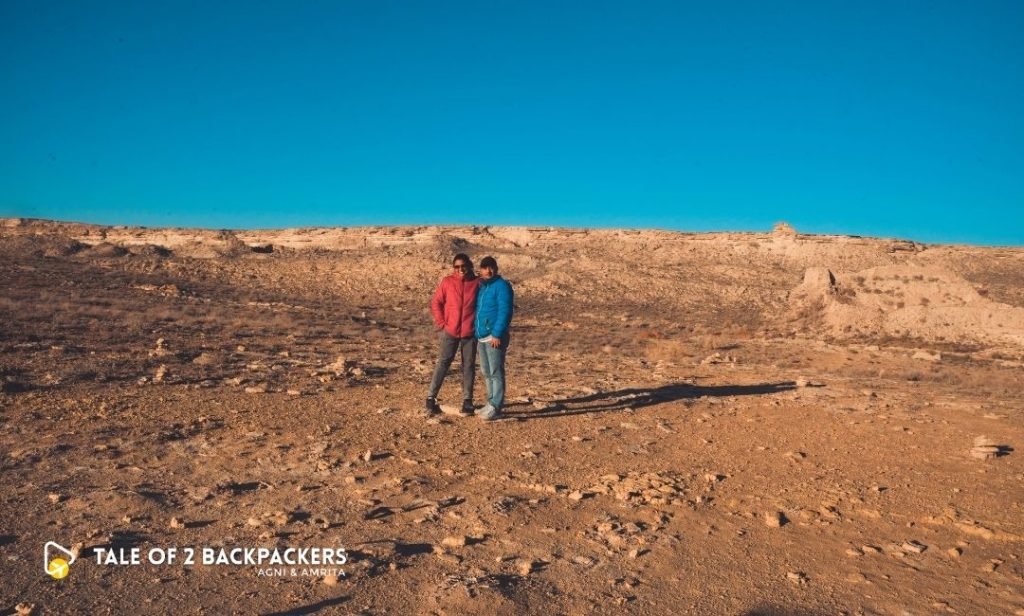
Is it worth visiting the Aral Sea?
As I mentioned at the beginning of the blog, I had asked the same question before traveling to the Aral Sea. And I got mixed responses. Now that I have visited the place, I really do not know how to answer the question.
For us, it was totally worth the time and money spent and the long and bumpy ride we had to go through. We were thrilled by the journey, awed by the landscape and thoroughly humbled to see what the disaster had done to the thriving ecosystem and economy.
If you are interested in seeing the natural disaster and understand its impact, you should definitely visit the place. We are happy that we have got a chance to explore the Aral Sea.
However, if you are low on budget, you can visit only Moynaq and explore the ship graveyard. You will get a grasp of the history of the place here as well.
A visit to the Aral Sea shore will make you realize firsthand what had actually happened to the sea.
If you want to experience staying at a yurt camp, then Aral Sea is not the place. Visit the yurt camps of Aydar Lake instead.
In Conclusion
The Aral Sea was a poignant reminder of the callousness of humans towards nature. And the tour was really an eye-opening experience for us. As much as we enjoyed the landscape, we were also forced to think.
I may not visit the place again, but the place and its memories will always remain with me.
Thank you for reading this blog on Aral Sea. Talking about it is close to my heart. Hope this travel guide was helpful in planning your trip to Moynaq and Aral Sea. If you have any questions or updates about the place, please feel free to share them in the comments below.
If you liked this post, please share it with your family, friends and neighbors.
Pin it for a later read!



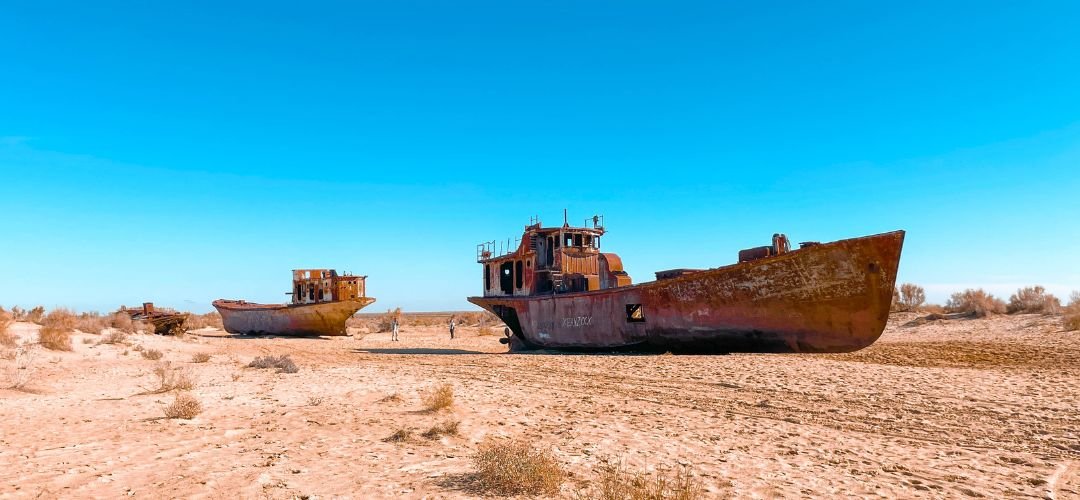

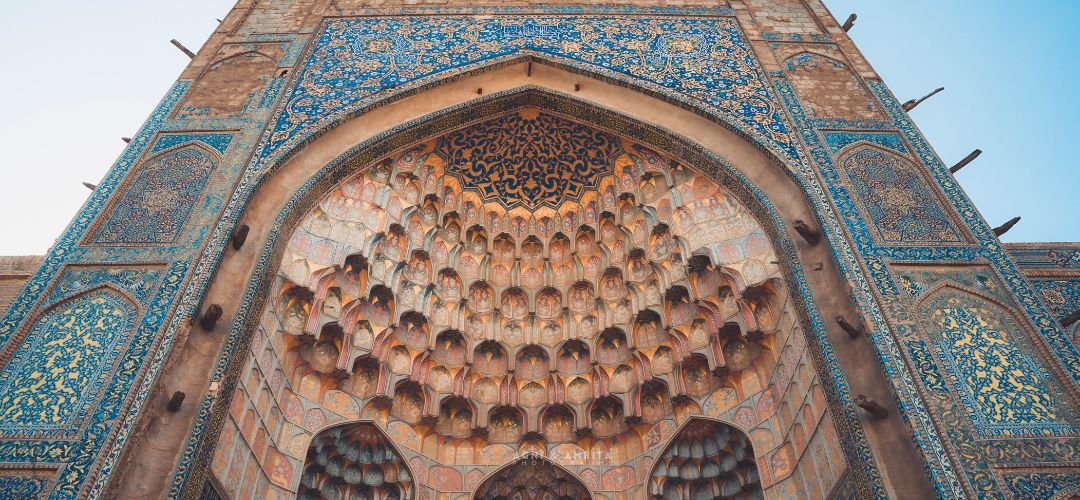
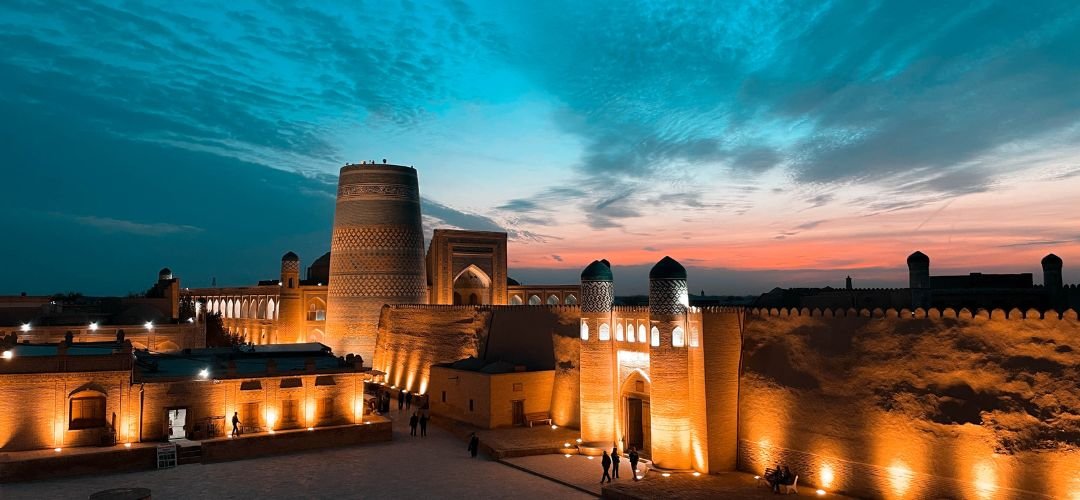
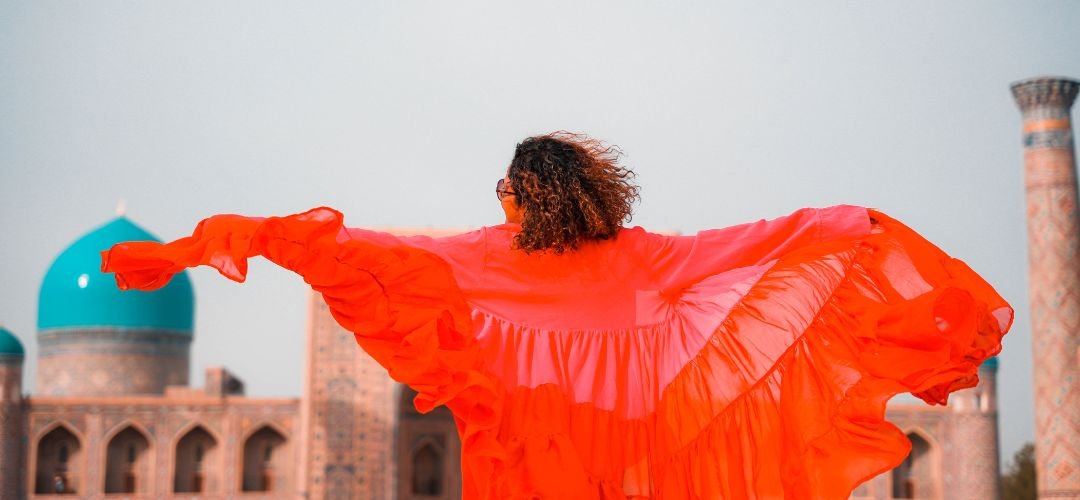
0 Comments